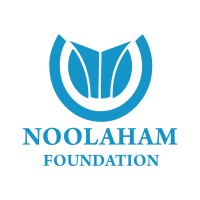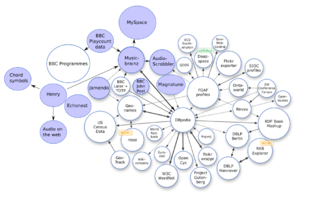Social software, also known as social apps or social platform includes communications and interactive tools that are often based on the Internet. Communication tools typically handle capturing, storing and presenting communication, usually written but increasingly including audio and video as well. Interactive tools handle mediated interactions between a pair or group of users. They focus on establishing and maintaining a connection among users, facilitating the mechanics of conversation and talk. Social software generally refers to software that makes collaborative behaviour, the organisation and moulding of communities, self-expression, social interaction and feedback possible for individuals. Another element of the existing definition of social software is that it allows for the structured mediation of opinion between people, in a centralized or self-regulating manner. The most improved area for social software is that Web 2.0 applications can all promote co-operation between people and the creation of online communities more than ever before. The opportunities offered by social software are instant connections and opportunities to learn.An additional defining feature of social software is that apart from interaction and collaboration, it aggregates the collective behaviour of its users, allowing not only crowds to learn from an individual but individuals to learn from the crowds as well. Hence, the interactions enabled by social software can be one-to-one, one-to-many, or many-to-many.
An open standard is a standard that is openly accessible and usable by anyone. It is also a common prerequisite that open standards use an open license that provides for extensibility. Typically, anybody can participate in their development due to their inherently open nature. There is no single definition, and interpretations vary with usage.
Radical transparency is a phrase used across fields of governance, politics, software design and business to describe actions and approaches that radically increase the openness of organizational process and data. Its usage was originally understood as an approach or act that uses abundant networked information to access previously confidential organizational process or outcome data.

Open-source software (OSS) is computer software that is released under a license in which the copyright holder grants users the rights to use, study, change, and distribute the software and its source code to anyone and for any purpose. Open-source software may be developed in a collaborative, public manner. Open-source software is a prominent example of open collaboration, meaning any capable user is able to participate online in development, making the number of possible contributors indefinite. The ability to examine the code facilitates public trust in the software.
As an ethic that spans science, engineering, business, and the humanities, transparency is operating in such a way that it is easy for others to see what actions are performed. Transparency implies openness, communication, and accountability.
Openness is an overarching concept or philosophy that is characterized by an emphasis on transparency and collaboration. That is, openness refers to "accessibility of knowledge, technology and other resources; the transparency of action; the permeability of organisational structures; and the inclusiveness of participation". Openness can be said to be the opposite of closedness, central authority and secrecy.
In Internet culture, a lurker is typically a member of an online community who observes, but does not participate. The exact definition depends on context. Lurkers make up a large proportion of all users in online communities. Lurking allows users to learn the conventions of an online community before they participate, improving their socialization when they eventually "de-lurk". However, a lack of social contact while lurking sometimes causes loneliness or apathy among lurkers.
Commons-based peer production (CBPP) is a term coined by Harvard Law School professor Yochai Benkler. It describes a model of socio-economic production in which large numbers of people work cooperatively; usually over the Internet. Commons-based projects generally have less rigid hierarchical structures than those under more traditional business models.

Free and open-source software (FOSS) is a term used to refer to groups of software consisting of both free software and open-source software where anyone is freely licensed to use, copy, study, and change the software in any way, and the source code is openly shared so that people are encouraged to voluntarily improve the design of the software. This is in contrast to proprietary software, where the software is under restrictive copyright licensing and the source code is usually hidden from the users.
Social peer-to-peer processes are interactions with a peer-to-peer dynamic. These peers can be humans or computers. Peer-to-peer (P2P) is a term that originated from the popular concept of the P2P distributed computer application architecture which partitions tasks or workloads between peers. This application structure was popularized by file sharing systems like Napster, the first of its kind in the late 1990s.

Noolaham Foundation is a legally registered, non-profit, non-partisan, secular entity, founded to provide enhanced access to information sources and foster knowledge-based development in Sri Lanka. It maintains an online digital library and archive, facilitates information preservation programs, provides financial assistance and technical guidance for digitization initiatives and actively participates in awareness-raising campaigns. It also co-ordinates a range of fund-raising activities and collaborates with other organizations and individuals.

Open data is data that is openly accessible, exploitable, editable and shared by anyone for any purpose. Open data is licensed under an open license.

Collaborative e-democracy refers to a hybrid democratic model combining elements of direct democracy, representative democracy, and e-democracy. This concept, first introduced at international academic conferences in 2009, offers a pathway for citizens to directly or indirectly engage in policymaking. Steven Brams and Peter Fishburn describe it as an "innovative way to engage citizens in the democratic process," that potentially makes government "more transparent, accountable, and responsive to the needs of the people."

Open educational practices (OEP) are part of the broader open education landscape, including the openness movement in general. It is a term with multiple layers and dimensions and is often used interchangeably with open pedagogy or open practices. OEP represent teaching and learning techniques that draw upon open and participatory technologies and high-quality open educational resources (OER) in order to facilitate collaborative and flexible learning. Because OEP emerged from the study of OER, there is a strong connection between the two concepts. OEP, for example, often, but not always, involve the application of OER to the teaching and learning process. Open educational practices aim to take the focus beyond building further access to OER and consider how in practice, such resources support education and promote quality and innovation in teaching and learning. The focus in OEP is on reproduction/understanding, connecting information, application, competence, and responsibility rather than the availability of good resources. OEP is a broad concept which can be characterised by a range of collaborative pedagogical practices that include the use, reuse, and creation of OER and that often employ social and participatory technologies for interaction, peer-learning, knowledge creation and sharing, empowerment of learners, and open sharing of teaching practices.
The digital commons are a form of commons involving the distribution and communal ownership of informational resources and technology. Resources are typically designed to be used by the community by which they are created.

In R&D management and systems development, open coopetition or open-coopetition is a neologism to describe cooperation among competitors in the open-source arena. The term was first coined by the scholars Jose Teixeira and Tingting Lin to describe how rival firms that, while competing with similar products in the same markets, cooperate which each other in the development of open-source projects in the co-development of Webkit).
Inner source is the use of open source software development best practices and the establishment of an open source-like culture within organizations for the development of its non-open-source and/or proprietary software. The term was coined by Tim O'Reilly in 2000 in his column.
Internet universality is a concept and framework adopted by UNESCO in 2015 to summarize their positions on the Internet. The concept recognizes that "the Internet is much more than infrastructure and applications, it is a network of economic and social interactions and relationships, which has the potential to enable human rights, empower individuals and communities, and facilitate sustainable development. The concept is based on four principles stressing the Internet should be human rights-based, open, accessible, and based on the multistakeholder participation. These have been abbreviated as the R-O-A-M principles. Understanding the Internet in this way helps to draw together different facets of Internet development, concerned with technology and public policy, rights and development."
The People's Code is an ongoing open source project that aims to make all US Federal agencies and departments utilize open source software, (OSS), for their platforms, at a pilot minimum of 20% open source. In so doing, Federal departments and agencies can be more transparent with the work they do. Software can eventually be streamlined across all agencies, and people can begin to make suggestions on how to improve the code and policy these departments work on. The belief that citizens should have this information available and open to them, is the idea behind what the Obama administration coined as the, People's Code.
Open source is source code that is made freely available for possible modification and redistribution. Products include permission to use the source code, design documents, or content of the product. The open-source model is a decentralized software development model that encourages open collaboration. A main principle of open-source software development is peer production, with products such as source code, blueprints, and documentation freely available to the public. The open-source movement in software began as a response to the limitations of proprietary code. The model is used for projects such as in open-source appropriate technology, and open-source drug discovery.






